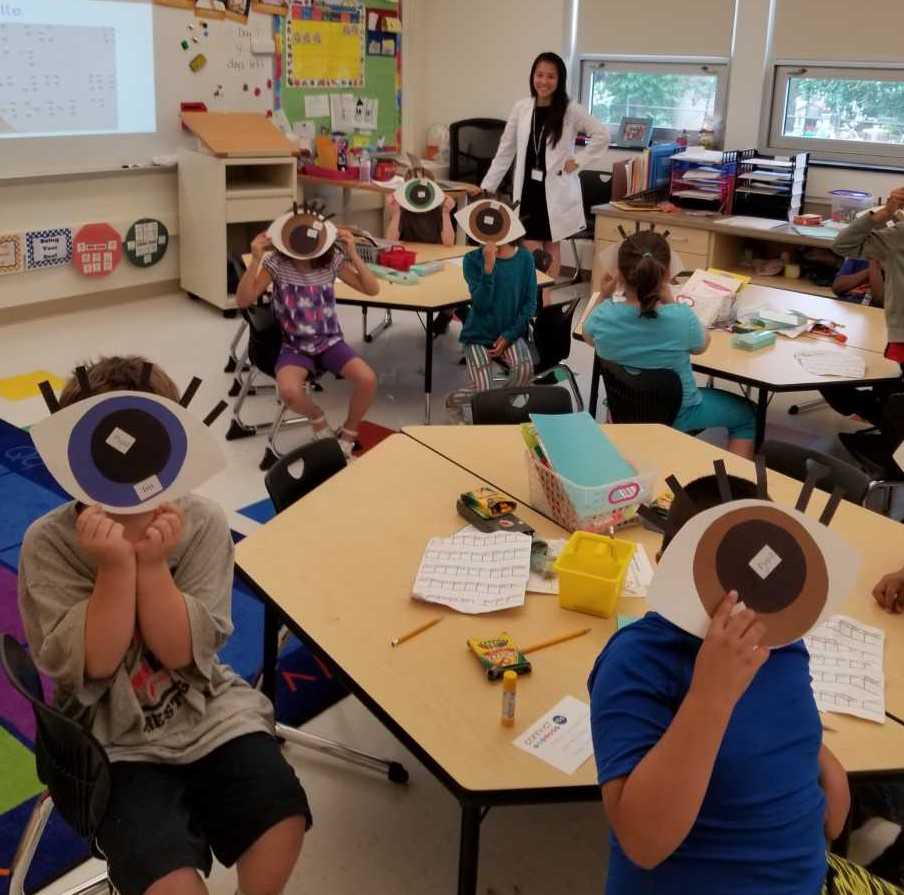by Dr. M | Feb 4, 2020 | Cornea, Dry Eye, Exam, Medical Eye Care, Sun Damage, Surgery, Vision
There is an eye condition called “Surfer’s Eye”. Can you guess how it got its name?

It’s not about the water…but If you thought it had to do with too much sun exposure, you would be right!
Long-term exposure to UV rays from the sun, as well as wind and dust, may result in growths on the surface of the eye. Surfers are particularly vulnerable, since they spend their time in the sun without sunglasses or other eye protection.
The technical term for growths on the eye caused by sun exposure are called Pinguecula and Pterygium. The condition appears on the eye’s conjuctiva (the clear covering over the white part of the eye.
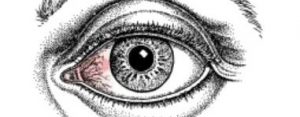 Pinguecula is a yellowish, raised growth on the conjunctiva. It’s usually on the side of the eye near your nose, but can happen on the other side too. A pinguecula is an abnormality formed by protein deposits, calcium or fat. It’s like a callus on your finger or toesisipisi.ccsisipisi.ccsisipisi.ccsisipisi.cc.
Pinguecula is a yellowish, raised growth on the conjunctiva. It’s usually on the side of the eye near your nose, but can happen on the other side too. A pinguecula is an abnormality formed by protein deposits, calcium or fat. It’s like a callus on your finger or toesisipisi.ccsisipisi.ccsisipisi.ccsisipisi.cc.
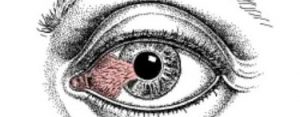
Pterygium (Surfer’s Eye) is a growth of fleshy tissue (has blood vessels). It usually has a triangular shape. It can remain small or grow large enough to cover part of the cornea. When it grows into the cornea, it can interfere with your vision.
Symptoms
The symptoms of pinguecula and pterygium can range from mild to severe. They include:
- redness and swelling of the conjunctiva
- a yellow spot or bump that builds on the white of your eye
- dryness, itching and burning in the eye.
- sensation of something in the eye
Treatment
- The best treatment is prevention…keep your eyes lubricated with artificial tears and wear sunglasses with UV protection.
- If you have the condition, lubricating eye drops will help to reduce discomfort.
- Your doctor can prescribe steroid eye drops which may reduce inflammation, redness and swelling in the eye.
- Surgical Removal: If eye drops alone don’t alleviate the symptoms, or if the growth is large enough to interfere with your vision, the growth can be removed surgically.
Protect your eyes, protect your vision. If you have any questions about caring for your sight, email, call or text our office. We are here to help!
by Dr. M | Dec 30, 2019 | Cornea, Eye Safety, LASIK, Patient Care, Surgery, Vision
How the laser works to improve your vision during LASIK surgery.
LASIK vision correction uses a laser to reshape your cornea to help you see better. To apply the laser treatment, Dr. Moran uses an excimer laser which emits a cool beam of ultraviolet light to precisely remove corneal tissue. The reshaped cornea allows for light rays to focus properly on the retina to give you clearer vision.
 Think of the cornea as a closed book with 500 pages. We create the flap about 100 pages into the book. Once the flap is opened, we apply the laser treatment to correct your vision in the last 400 pages of the book.
Think of the cornea as a closed book with 500 pages. We create the flap about 100 pages into the book. Once the flap is opened, we apply the laser treatment to correct your vision in the last 400 pages of the book.
After your flap is lifted, the excimer laser applies pulses of ultraviolet across the cornea in a custom pattern designed for your eyes. These precise light rays are able to remove as little as 0.25 microns of tissue at a time. How small is a micron? One micron is a thousandth of a millimeter.
How the cornea changeS DUring LASIK
The laser treats your cornea to give you better vision. Your cornea may be too long, too flat, or irregularly shapedsisipisi.ccsisipisi.ccsisipisi.ccsisipisi.ccsisipisi.cc.
- If you are nearsighted, the laser will make the cornea more flat;
- if you are farsighted, the laser will make the center of the cornea steeper.
- If you have an astigmatism, the laser will smooth your corneal tissue into a more symmetrical shape.
- If you have a combination of issues, the laser can treat nearsightedness with astigmatism, as well as farsightedness with astigmatism.
How the treatment is determined
In order to create your treatment plan, Dr. Moran does careful calculations using the data from your pre-operative testing. He takes into account your age and your visual needs. Then, the laser is programmed with your unique measurements. Once programmed, the laser is controlled by computer settings programmed to correct your specific refractive error. We use Custom-Vue Wavescan technology. It is called “Custom-Vue” since the pattern of treatment is customized for each patient to give you the best possible vision.
Dr. Moran will ask you to focus on a light while the laser is being applied. While it is important to keep your eye focused during the treatment, the laser has an added safety feature. The laser uses an eye-tracking system that monitors any eye movements and keeps the laser beam on target during surgery. Studies have shown that eye trackers produce better outcomes and decrease complications. If your eye moves during the surgery, the laser will stay centered. It will track and follow your eye movements.
What to expect After LASIK
 When the laser treatment is done, you will notice clearer vision than when you entered the room. However, your vision will still be a little blurry – similar to seeing under water. The blurriness is because you have a lot of drops in your eyes! Dr. Moran will have you sit up and look across the room at a clock about 10 feet away. You will be able to tell him what time it is, even if you weren’t able to see the clock when you walked into the room. Your surgery day instructions are to go home and keep your eyes closed for the rest of the day. Your vision will fluctuate as your eyes are healing, however, the next day you can drive to the office for your 1-day PO LASIK appointment.
When the laser treatment is done, you will notice clearer vision than when you entered the room. However, your vision will still be a little blurry – similar to seeing under water. The blurriness is because you have a lot of drops in your eyes! Dr. Moran will have you sit up and look across the room at a clock about 10 feet away. You will be able to tell him what time it is, even if you weren’t able to see the clock when you walked into the room. Your surgery day instructions are to go home and keep your eyes closed for the rest of the day. Your vision will fluctuate as your eyes are healing, however, the next day you can drive to the office for your 1-day PO LASIK appointment.
To see if LASIK is right for you, schedule your FREE Consult today. Call, email or text our office for your appointment. Learn more about, just click LASIK
by Dr. M | Aug 23, 2019 | Contact Lenses, Exam, Eyeglasses, Glasses, Mark Moran, Office, Patient Care, Prescriptions, Procedure, Vision
What is the first test we do when you come into the office for a complete vision exam?
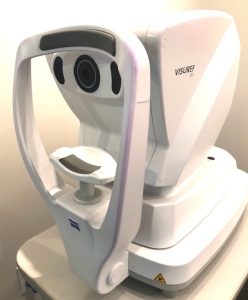
The Autorefractor measures your prescription
We take a measurement of your vision with the AutoRefractor.
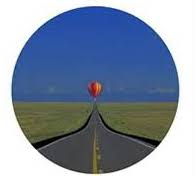
Focus on the balloon!
When you take a seat at the autorefractor, we ask you to look into the device. You will see a blurry hot air balloon at the end of a long straight road. As the balloon comes into focus, we measure your prescription.
We ask you to focus on the image (balloon) to keep your eye centered while we take measurements. It only takes just a few seconds to measure using an autorefractor. The balloon is at the center of the image, which aligns your eye perfectly for the test.
When we use this machine, nothing touches your eye, and there is no puff of air!sisipisi.ccsisipisi.ccsisipisi.ccsisipisi.ccsisipisi.cc
The autorefractor provides an objective measurement of a person’s refractive error and prescription for glasses or contact lenses. The device measures how light is changed as it enters your eye.
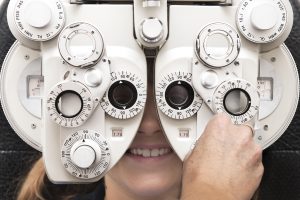
Better 1 or Better 2?
We don’t use the numbers from the device to order your prescription glasses or contacts. The autorefractor is just part of the process. The information from the autorefractor is used as a starting point to determine your best prescription. We take these numbers and dial them into the phoropter.
Here is where your opinion comes in. As we cycle through lenses, we ask, “Is it Better 1 or Better 2?” Your responses help us to pinpoint your best vision. When we show you different choices, we aren’t trying to trick you! We are showing you different options to find your best correction.
Why do we use a balloon photo?
The image isn’t important, but the need to focus on something at a distance is key to a good measurement. The balloon is just one of many visual targets used in the autorefractor. Besides the hot air balloon, other popular images include: a pinwheel/peppermint candy, a house (or barn) at the end of a road, a house in the middle of a field.
FOR MORE INFORMATION CLICK HERE…
by Dr. M | Jul 17, 2019 | Contact Lenses, Donate, Eyeglasses, Glasses, Sunglasses, Vision
If you care enough to recycle, we can help!
Bring your recyclable vision items into our office, and we’ll take care of the rest!
EYEGLASSES:
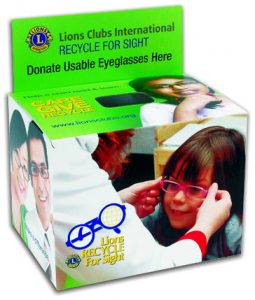
We have a donation box in our office!
Bring your used glasses to the office. We have a collection box for the Lions Club “Recycle Your Sight” program. The donated glasses are measured and then distributed to people who match the prescription. Your donation can help a child to be successful in school, allow an adult to get a job, or a keep a senior citizen living independently.
We accept any type of glasses: distance, reading and sunglasses too! Safety glasses are also welcome. If you have a glasses case, we can accept those too. But don’t worry if you no longer have the case, we will wrap them so they arrive at their destination safelysisipisi.ccsisipisi.ccsisipisi.ccsisipisi.cc.
CONTACT LENS PACKAGING:
While you may be aware that the contact lens boxes can be recycled through your municipal recycling program, did you know that the blister packs can be recycled too?
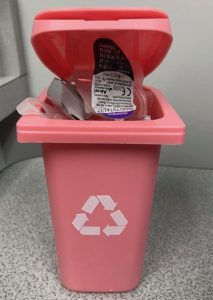
Recycle your contact lens packaging!
Our office takes part in a recycling program that accepts specialty packaging…including the foil and plastic of blister packs. If you wear daily contacts, you are throwing out two containers each day. Multiply that times 30 days/month, 365 days/year…it adds up! Especially when you consider how many patients wear contacts,
Don’t put them in the trash! Collect your discarded containers and bring them into the office. We will send them to our recycling program, and eliminate all of that waste. Recycling small things can make a big difference.
PLUS…for every qualifying shipment a donation will be made to Optometry Giving Sight. This nonprofit organization works to prevent blindness and impaired vision for those who do not have access to eye exams and glasses/contacts. For more info, visit: http://www.givingsight.org
Partner with Moran Eye Associates in recycling.
Working together, we can make a difference!
by Dr. M | Jun 25, 2019 | Appointment, Exam, Experience, LASIK, Mark Moran, Medical Eye Care, Patient Care, Surgery, Vision
Have you seen our patient reviews?
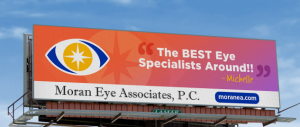
This billboard says it all, thanks Michelle!
This summer, Moran Eye Associates will be featured on electronic billboards around the Lehigh Valley. Choosing the content of the billboards was easy…our patient reviews speak volumes about our practice! We are proud of our reputation for excellence.
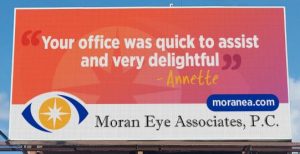
Look for our colorful billboards throughout the Lehigh Valley!

Our staff is committed to patient education.
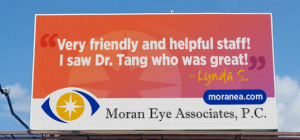
Dr. Tang is terrific and very thorough!
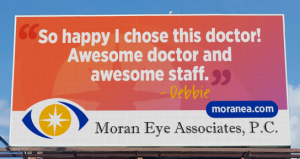
Our doctors and staff are proud to be called “awesome”!
sisipisi
Dr. Moran and Dr. Tang are now accepting new patients. We offer medical, surgical and vision care to people of all ages. If you would like to make an appointment, just fill out the information to the right. You can also call or text us at 610-628-2022.
We are happy to offer your family the kind of quality eye care that our patients are talking about! Click here for more Patient Reviews
by Dr. M | May 23, 2019 | Appointment, Education, Eye Protection, Eye Safety, Fun Stuff, Vision
As part of Moran Eye Associates outreach program, Dr. Bianca Tang is visiting schools in Allentown, Bethlehem and Easton to teach young students about vision. Using crafts and a story time presentation, she explains to first graders how the eye works and the importance of protecting your eyes.
“It’s been fun working with the students. They are good listeners and are enthusiastic to share what they know about vision.”
She shows the students with pictures of different kinds of animal eyes. These pictures illustrate how although cat, horse, lizard, fish and lizard eyes all look very different, the design gives the animals the right vision for their environment.
She talks with the students about how to protect their eyes, so that they can have good vision that lasts them a lifetime. They discuss how wearing sunglasses protects your eyes from the UV rays of the sun. They also talk about the importance of eye protection while playing sports, and how everyone should wear eye shields at work and at home if there is a danger of something hitting their eye. Everyone attending gets a pair of sunglasses with UV protection to take home.
To help the students learn about the parts of the eye, the children do a craft project to make an eye of their own, complete with iris, pupil and lots of eyelashes!
If you would like Dr. Tang to make a visit to your school, please contact our office.
If you would like Dr. Tang to visit your school, please contact our office to set up a date.

 Pinguecula is a yellowish, raised growth on the conjunctiva. It’s usually on the side of the eye near your nose, but can happen on the other side too. A pinguecula is an abnormality formed by protein deposits, calcium or fat. It’s like a callus on your finger or toesisipisi.ccsisipisi.ccsisipisi.ccsisipisi.cc.
Pinguecula is a yellowish, raised growth on the conjunctiva. It’s usually on the side of the eye near your nose, but can happen on the other side too. A pinguecula is an abnormality formed by protein deposits, calcium or fat. It’s like a callus on your finger or toesisipisi.ccsisipisi.ccsisipisi.ccsisipisi.cc.
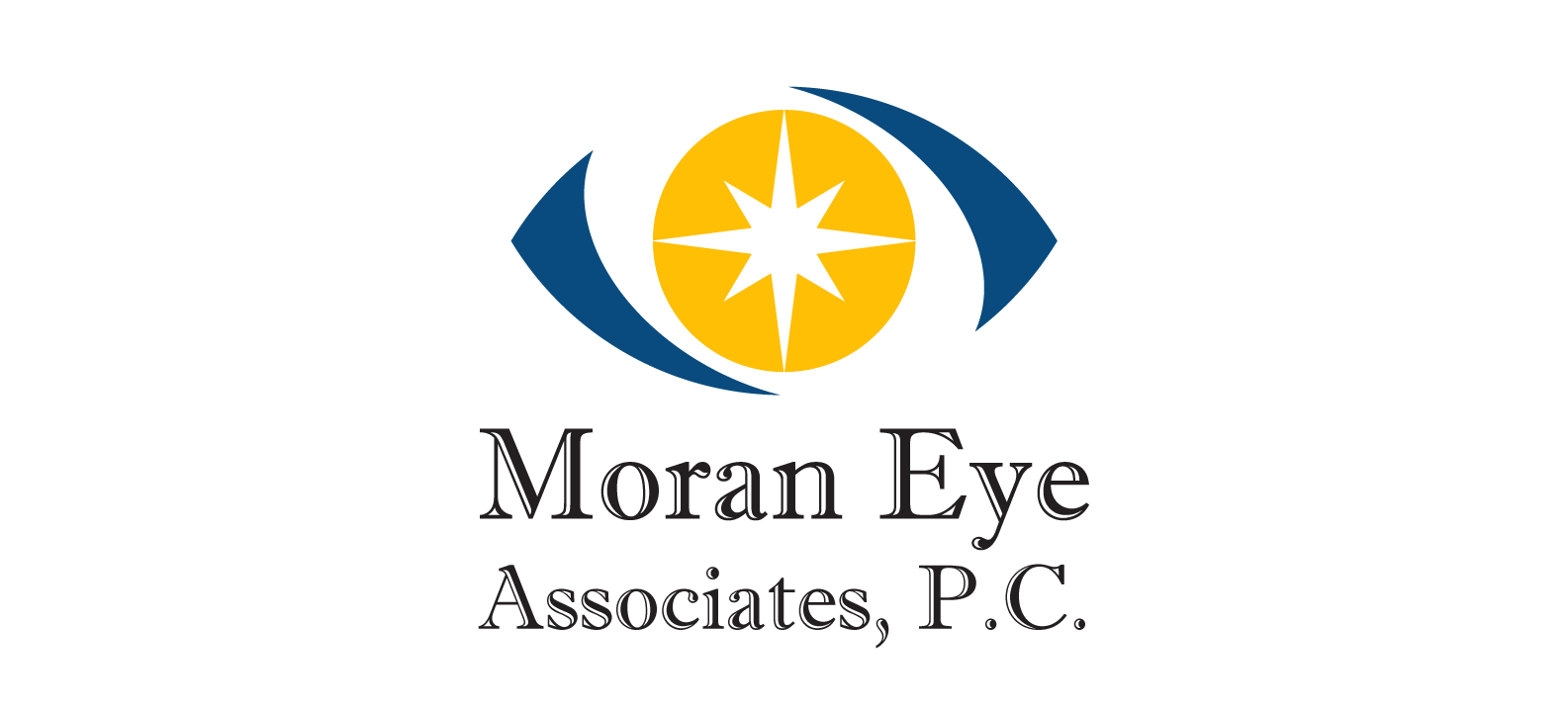
 Think of the cornea as a closed book with 500 pages. We create the flap about 100 pages into the book. Once the flap is opened, we apply the laser treatment to correct your vision in the last 400 pages of the book.
Think of the cornea as a closed book with 500 pages. We create the flap about 100 pages into the book. Once the flap is opened, we apply the laser treatment to correct your vision in the last 400 pages of the book.
 When the laser treatment is done, you will notice clearer vision than when you entered the room. However, your vision will still be a little blurry – similar to seeing under water. The blurriness is because you have a lot of drops in your eyes! Dr. Moran will have you sit up and look across the room at a clock about 10 feet away. You will be able to tell him what time it is, even if you weren’t able to see the clock when you walked into the room. Your surgery day instructions are to go home and keep your eyes closed for the rest of the day. Your vision will fluctuate as your eyes are healing, however, the next day you can drive to the office for your 1-day PO LASIK appointment.
When the laser treatment is done, you will notice clearer vision than when you entered the room. However, your vision will still be a little blurry – similar to seeing under water. The blurriness is because you have a lot of drops in your eyes! Dr. Moran will have you sit up and look across the room at a clock about 10 feet away. You will be able to tell him what time it is, even if you weren’t able to see the clock when you walked into the room. Your surgery day instructions are to go home and keep your eyes closed for the rest of the day. Your vision will fluctuate as your eyes are healing, however, the next day you can drive to the office for your 1-day PO LASIK appointment.









